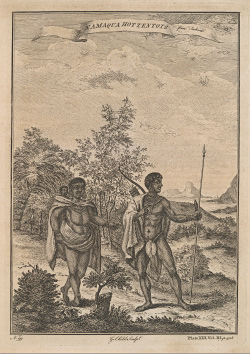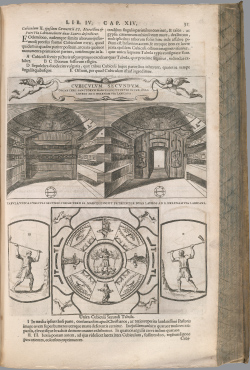At the time of his departure for the Smithsonian in 1848, Jewett left behind a library that had doubled in size, to over 20,000 volumes, in just over five years. Jewett’s successor, Reuben Aldrich Guild, Class of 1847 and the first chronicler of Brown’s history, was Librarian for 45 years. He established the library’s card catalog, oversaw the building of the first structure at Brown to serve exclusively as a library, and greatly increased the collections. He was also a founder of the American Library Association and in 1858 wrote The Librarian’s Manual, one of the earliest works on librarianship published in the United States.
In 1849, Guild purchased a sizeable group of books in art, history, and law recently imported by the Boston firm of Little & Brown. Among these volumes were William Dugdale’s Monasticon Anglicanum in eight volumes (London, 1846); a set of the Somers Tracts edited by Sir Walter Scott (London, 1809–1815) and Leigh Hunt’s copy of Scott’s edition of the Works of John Dryden (London, 1808). Two years later, Guild journeyed to New York where he procured 386 volumes at the sale of the collection of Samuel Farmer Jarvis. The books were described by Professor J. L. Lincoln of the Library Book Committee as mostly rare and “in the best editions.” The purchase included “a fine copy of Polard’s Polybius…Brotier’s Tacitus…Calvin’s Works, nine volumes — a fine copy of the Amsterdam edition of 1671…and Spanheim’s Dissertation on Ancient Coins, two volumes — a copy which belonged to [Edward] Gibbon’s private library.” Professor Lincoln added that “these books have cost the Library a large outlay of money, and it may be justly said that they will be rarely used; but these facts are not the criterion of their value to our Library.” Instead, the purchase of such books “indicate a great step of progress, in the right direction, of the Library of a learned institution.”
Numerous other purchases consisting of costly, rare, or otherwise unusual books were made between 1850 and 1870. Professor Alexis Caswell, later President of the University, bought a large collection of architectural works while in Paris during 1861. Several hundred volumes in English history were acquired through Providence bookseller Sidney S. Rider whose own great collection on Rhode Island history would ultimately be given to Brown; 224 volumes in theology and philosophy, mostly in German, were bought from the estate of the late Professor Robinson P. Dunn. Henry Stevens obtained for Brown an important group of books on northern Europe including Scandinavia, and 409 volumes on Luther and the Reformation were bought from the collection of President Barnas Sears when he resigned in 1867.
 John Green, ed. New General Collection of Voyages and Travels (London: Printed for Thomas Astley, 1745–1747).
John Green, ed. New General Collection of Voyages and Travels (London: Printed for Thomas Astley, 1745–1747). Thomas Herring, A Sermon Preached before the House of Lords (London: Printed for John Pemberton, 1740).
Thomas Herring, A Sermon Preached before the House of Lords (London: Printed for John Pemberton, 1740). Antonio Bosio (trans. by Paolo Aringhi), Roma Subterranea Novissima (Paris, 1659).
Antonio Bosio (trans. by Paolo Aringhi), Roma Subterranea Novissima (Paris, 1659).The largest purchase in this period, 1,858 volumes, was made possible by a $1,000 bequest from James Tallmadge, Class of 1798 and a former President of the University of the City of New York, the antecedent of New York University. His bequest was used to acquire duplicates from the collection of John Jacob Astor, whose personal library would later help to form the cornerstone of the New York Public Library. The purchases included such rare items as Thomas Astley’s New General Collection of Voyages and Travels (London, 1745–1747), Diogo do Couto’s Décadas da Ásia (Lisbon, 1628–1736), Vincenzo Coronelli’s Description Géographique et Historique de la Morée (Paris, 1687) and Giovanni Pontano’s Opera printed by Aldus Manutius in 1513.
While most of Brown’s books were acquired by purchase beginning in the 1840s, the tradition of giving books, especially rare books, to the library continued. The largest gift of antiquarian material dating from this period was an extraordinarily diverse collection of pamphlets donated by the Hon. Theron Metcalf, Class of 1805. A distinguished jurist and author on legal subjects, Metcalf was an avid collector of American and English pamphlet literature of the 17th through the 19th centuries. Metcalf added periodically to the collection after giving it to Brown and, at his death in 1875, it included well over 10,000 items. The collection contains ordination, election-day and dedicatory sermons, Fourth of July orations, plus pamphlets on the Civil War and slavery, the Irish question, Mormonism, agriculture, medicine, and women’s suffrage, to name but a few categories.
The most important donor of rare books during this period was John Carter Brown. His beneficences were described in Guild’s History of Brown University:
Mr. Brown continued to present, from year to year, valuable donations to the Library, chiefly of rare and costly books. Among them may be mentioned, in illustration, the following, viz: Justiniani Institutiones, large folio, Venetiis, N. Jenson, 1477 — a splendid copy of one of the old illuminated books, bound in full Russia; Babylonian Talmud, twelve volumes, folio, bound in full goat gilt — a sumptuous copy; Barnard’s Catalogus Bibliothecae Regiae, large paper, six volumes, folio; Muratori’s Rerum Italicarum Scriptores, with Tartini’s Continuation, thirty volumes, folio; Journal des Débats, Paris, 1815–36, seventy-four volumes, folio; Panzer’s Annales Typographici, eleven volumes, quarto; Livy’s Decades a Lucca Porro Recognitae, folio, Tarvisi, J. Vercellius, 1482 — an uncommonly fine specimen of ancient typography; the London Chronicle, 1757–98, eighty-three volumes, quarto — a fine clean copy, edges untrimmed; Aringhi’s Roma Subterranea novissima, in qua post Antonium Bossium, etc., two volumes, folio, 1659.